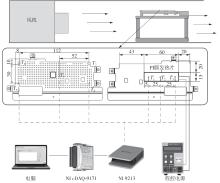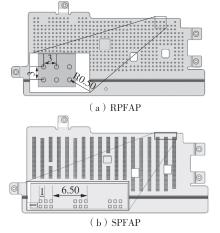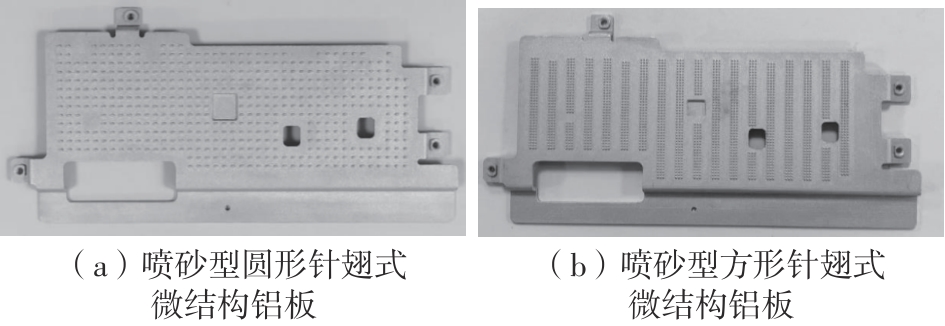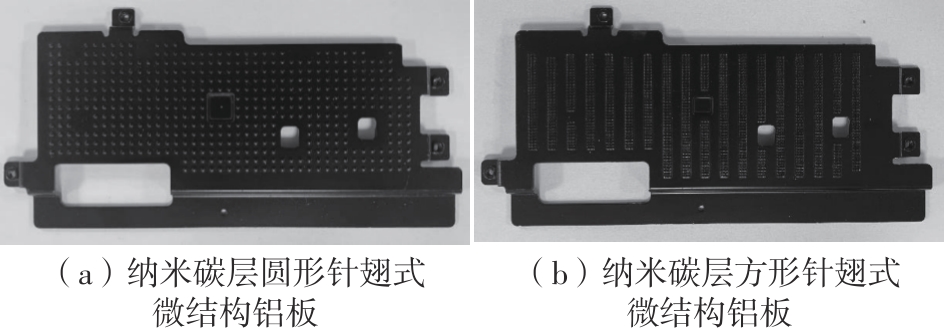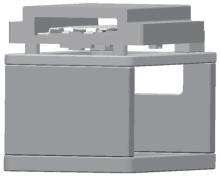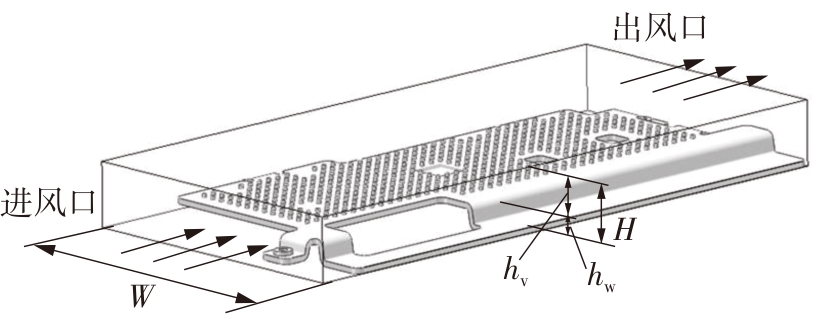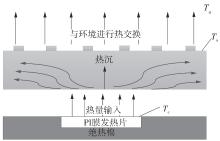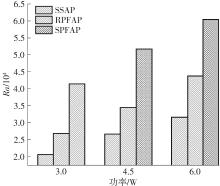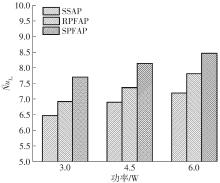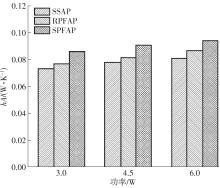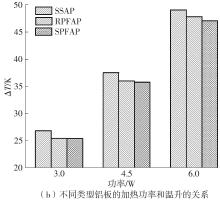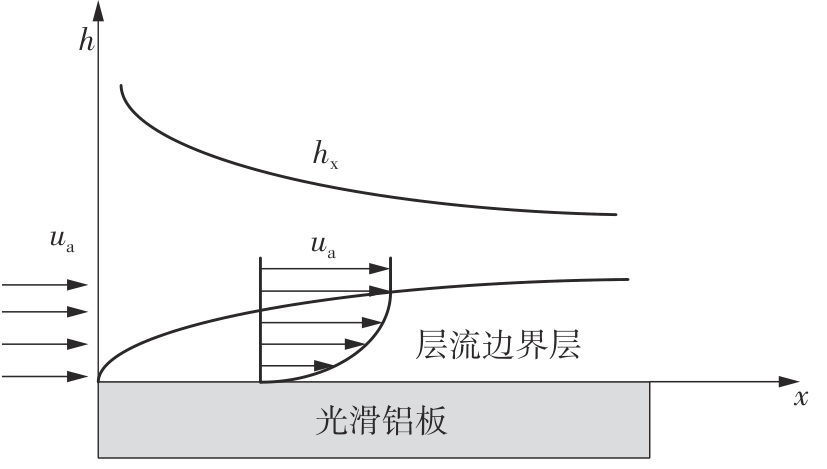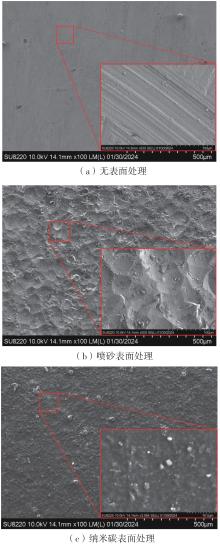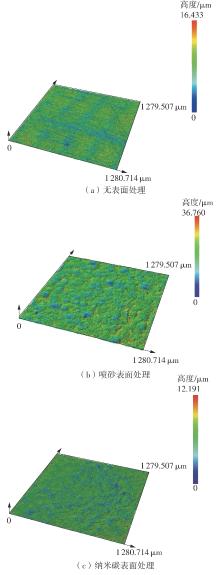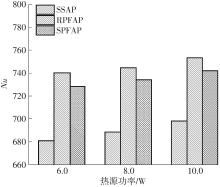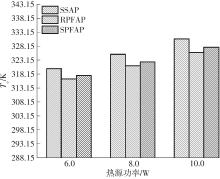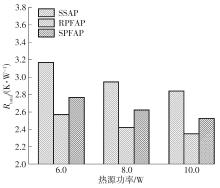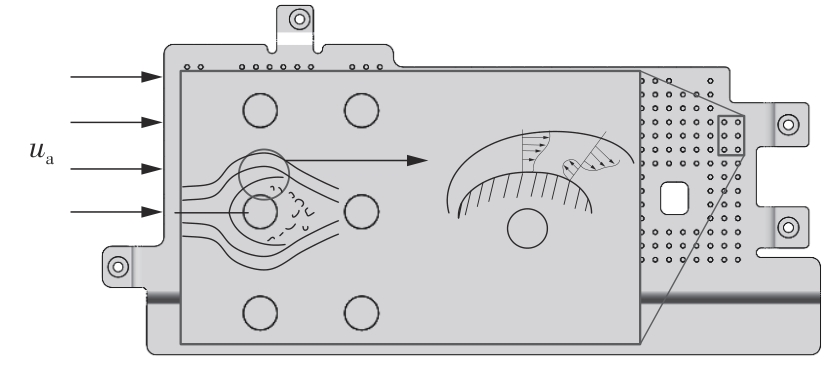Journal of South China University of Technology(Natural Science Edition) ›› 2025, Vol. 53 ›› Issue (4): 61-71.doi: 10.12141/j.issn.1000-565X.240208
• Mechanical Engineering • Previous Articles Next Articles
Study on Heat Transfer Characteristics of Aluminum Plates with Different Surface Micro-Functional Structures
LI Yong1, WANG Huipan1, HE Jiabin2, JIANG Kejun2, CHEN Xinyu1
- 1.School of Mechanical and Automotive Engineering,South China University of Technology,Guangzhou 510640,Guangdong,China
2.China Mobile Communication Group Terminal Co. ,Ltd. ,Beijing 102206,China
-
Received:2024-04-28Online:2025-04-25Published:2024-07-22 -
About author:李勇(1974—),男,博士,教授,主要从事微功能结构、相变器件设计制造及传热性能等研究。E-mail:meliyong@scut.edu.cn -
Supported by:the Natural Science Foundation of Guangdong Province(2023A1515011635);the Gateway Router Product Heat Dissipation Key Technical Cooperation Project(D8230630)
CLC Number:
Cite this article
LI Yong, WANG Huipan, HE Jiabin, JIANG Kejun, CHEN Xinyu. Study on Heat Transfer Characteristics of Aluminum Plates with Different Surface Micro-Functional Structures[J]. Journal of South China University of Technology(Natural Science Edition), 2025, 53(4): 61-71.
share this article
| 1 | BURAK K, MECIT S .Heat transfer enhancement using U-shaped flow routing plates in cooling printed circuit boards[J].Journal of the Brazilian Society of Mechanical Sciences and Engineering,2018,40(1):13/1-14. |
| 2 | GHASEMI E S, RANJBAR A A, Hosseini M J .Experimental evaluation of cooling performance of circular heat sinks for heat dissipation from electronic chips using nanofluid[J].Mechanics Research Communications,2017,84:85-89. |
| 3 | SADEGHI H, IZADPANAH E, RABIEE B M,et al .Effect of cylinder geometry on the heat transfer enhancement of power-law fluid flow inside a channel[J].Journal of the Brazilian Society of Mechanical Sciences and Engineering,2017,39(5):1695-1707. |
| 4 | KIM K, WON M, KIM J,et al .Heat pipe cooling technology for desktop PC CPU[J].Applied Thermal Engineering,2003,23(9):1137-1144. |
| 5 | KHORUNZHII I, GABOR H,JOB R,et al .Model-ling of a pin finheat converter with fluid cooling for power semiconductor modules[J].International Journal of Energy Research,2003,27:1015-1026. |
| 6 | 唐恒,汤勇,伍晓宇,等 .表面功能结构制造研究的新进展与发展趋势[J].机械工程学报,2022,58(11):183-199. |
| TANG Heng, TANG Yong, WU Xiaoyu,et al .New progress and development trend of manufacturing of functional surface structure[J].Journal of Mechanical Engineering,2022,58(11):183-199. | |
| 7 | 汤勇,周明,韩志武 .表面功能结构制造研究进展[J].机械工程学报,2010,46(23):93-105. |
| TANG Yong, ZHOU Ming, HAN Zhiwu,et al . Recent research on manufacturing technologies of functional surface structure[J].Journal of Mechanical Engineering,2010,46(23):93-105. | |
| 8 | ALAM W M, BHATTACHARYYA S, SOUAYEH B,et al .CPU heat sink cooling by triangular shape micro-pin-fin:numerical study[J].International Communications in Heat and Mass Transfer,2020,112:104455/1-8. |
| 9 | HUANG S, ZHU H, ZHENG Y,et al .Compound thermal performance of an arc-shaped inner finned tube equipped with Y-branch inserts[J].Applied Thermal Engineering,2019,152:475-481. |
| 10 | CHIN S,FOO J, LAI Y,et al .Forced convective heat transfer enhancement with perforated pin fins[J].Heat and Mass Transfer,2013,49(10):1447-1458. |
| 11 | GREGORCIC P, ZUPANCIC M, GOLOBIC I .Scala-ble surface microstructuring by a fiber laser for con-trolled nucleate boiling performance of high and low-surface-tension fluids[J].Scientific Reports,2018,8(1):7461/1-8. |
| 12 | DJAMEL S, LAHCENE B, AISSA Y,et al .Numerical investigation and optimization of a heat sink ha-ving hemispherical pin fins[J].International Communications in Heat and Mass Transfer,2021,122:105133/1-16. |
| 13 | NURAISYAH S R, ADNAN I, AHMAD F,et al .Performance enhancement of photovoltaic modules with passive cooling multidirectional tapered fin heat sinks (MTFHS)[J].Case Studies in Thermal Engineering,2023,50:103400/1-8. |
| 14 | 陆龙生,刘晓辰,邓大祥 .多孔壁面沟槽的犁切-热处理成形机理[J].华南理工大学学报(自然科学版),2012,40(1):35-39,57. |
| LU Long-sheng, LIU Xiao-chen, DENG Da-xiang .Formation mechanism of porous grooves on tube walls by ploughing-heat treatment[J].Journal of South China Univ-ersity of Technology (Natural Science Edition),2012,40(1):35-39,57. | |
| 15 | ZHAO Y Q, SONG Y N, ZHUANG N L,et al .Optimization design of surface microstructure of high-efficiency space radiation heat dissipation fins[J].An-nals of Nuclear Energy,2023,182:109590/1-13. |
| 16 | 王乐,吴珂,俞益波,等 .自然对流条件下LED阵列散热器改进研究[J].光电子·激光,2011,22(3):338-342. |
| WANG Le, WU Ke, YU Yi-bo,et al . Study on LED array heat radiator improvement under natural convection[J].Optoelectronic Laser,2011,22(3):338-342. | |
| 17 | YOUSFI A, SAHEL D, MELLAL M,Effects of a pyramidal pin fins on CPU heat sink performances[J].Journal of Advanced Research in Fluid Mechanics and Thermal Sciences,2019,63 (2):260-273. |
| 18 | 刘剑洪,吴双泉,何传新,等 .碳纳米管和碳微米管的结构、性质及其应用[J].深圳大学学报理工版,2013,30(1):1-11. |
| LIU Jianhong, WU Shuangquan, HE Chuanxin,et al .Structure,properties and applications of carbon nanotubes and carbon micron tubes[J].Journal of Shenzhen University (Science and Technology Edition),2013,30(1):1-11. | |
| 19 | PONGIANNAN K S, RAMALINGAM V, NAGENDRAN L .Natural-convection heat transfer enhancement of aluminum heat sink using nanocoating by electron beam method[J].Thermal Science,2019,23(5B):3129-3141. |
| 20 | MANDAL S, DEB A,SEN D .Mixed convective heat transfer with surface radiation in a rectangular channel with heat sources in presence of heat spreader[J].Thermal Science and Engineering Progress,2019,14:100423/1-7. |
| 21 | 杨世铭,陶文栓 .传热学[M].北京:高等教育出版社,2006:41-60. |
| [1] | ZHOU Linren, LI Shaoji, CHEN Lan. Experimental Investigation into Effect of Surface Roughness on Convective Heat Transfer of Concrete [J]. Journal of South China University of Technology(Natural Science Edition), 2023, 51(7): 81-89. |
| [2] | YANG Song, LI Wenqiang, HUANG Xu, et al. Study on Temperature Field of Steel Box Girder Based on Modified Convective Heat Transfer Coefficient [J]. Journal of South China University of Technology(Natural Science Edition), 2021, 49(4): 47-58,64. |
| [3] | Han Guang- ze Chen Jia- jia. Thermodynamic Mechanism of Convective Heat Transfer Enhanced by Electric Field [J]. Journal of South China University of Technology (Natural Science Edition), 2013, 41(12): 125-128. |
| [4] | Shao Jian-tao Liu Jing Zhao Jia-ning Fu Zhi-peng Zhang Wen-wu . Experimental Investigation into Convective Heat-Transfer Characteristics of Horizontal Roof of Building [J]. Journal of South China University of Technology (Natural Science Edition), 2008, 36(3): 134-139. |
| Viewed | ||||||
|
Full text |
|
|||||
|
Abstract |
|
|||||
